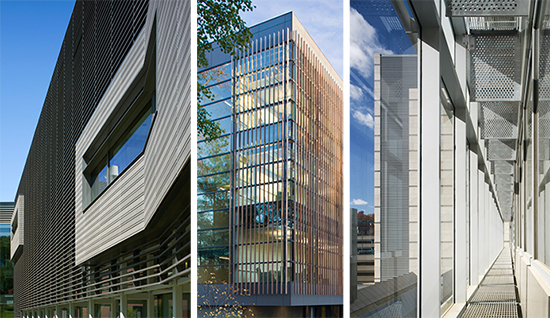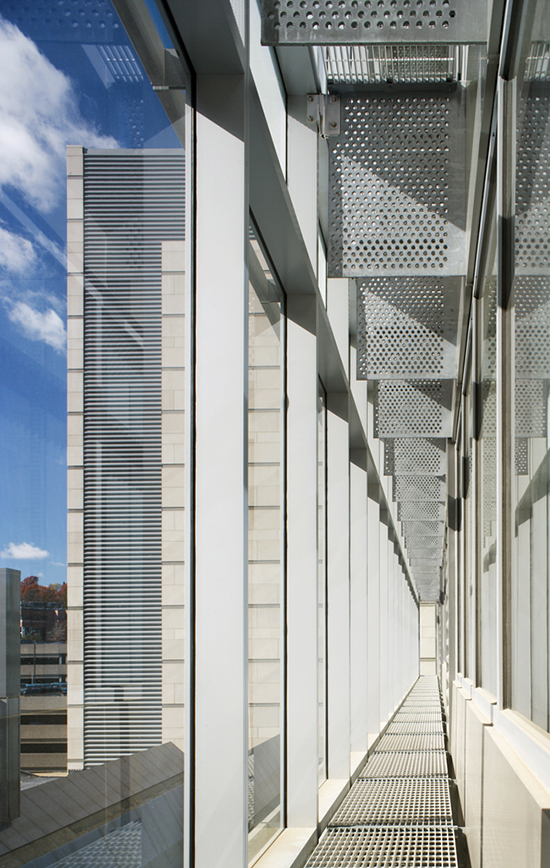
The other week I was perusing one of my favorite web sites autoblog.com, I am a self-confessed arm chair motor head. I ran across an article about a custom car shop that had developed a paint that changed color when it gets wet. I had two immediate thoughts. First, could this work on metal panels for buildings? Imagine a building being one color one moment and then after a rain shower another. I noticed that when the car got wet the bright yellow of the original color turned very dark. Then my second thought, will this technology be similar to those silly mood rings that came out in the mid 70’s? Those rings seemed really cool for a couple of weeks, but ultimately turned to a muddy brown color all the time. I guess the thermo chromic element could only cycle through so many iterations before running its course. Just like the mood ring, would the vivid yellow paint job eventually turn to dark brown, never to change back again?
The concept of a fluid exterior appearance led to me to think more about our fascination with things that change appearance and how that has manifested itself in architecture – think of the Las Vegas Strip and Times Square. Both are fascinating places to visit – façades are decomposed to support changing images, which often have little to do with the actual building function, such as the neon of Vegas and, more interestingly, the LED panels of Times Square. In theory a building could be comprised of programmable screens that could change as often as you like. This allows for endless possibilities for building appearance. However, neither of these approaches appears to consider sustainability, and inspires me to wonder who would want to live in these spaces. Thankfully, these are relatively isolated events that have not caught on in many our urban landscapes.

My thoughts then turned to the AIA 2030 Challenge, our pursuit of reduced energy consumption and our fascination of things that change and move. For example, the articulated façade of the Arab World Institute in Paris by Jean Nouvel is a really interesting idea – it had large camera like shutters that reacted to the sun to control light and heat gain, however, as I understand it is a classic example of a technology that was ahead of its time. There have been numerous other buildings in the not too distant past that have incorporated moving elements into the façade that have also stopped functioning fully.
All of this brings me back to cars. I had a 1990 Toyota Camry that had an automatic shoulder harness system. The user closed the door and the shoulder strap ran up the door frame, and when the user opened the door and the strap automatically ran back down again. This is a feature I thought would surely break, but 10 years later it was still functioning flawlessly, like much of the rest of the car. Maybe if Toyota had made Mr. Nouvel’s shutters they would still be working today. But herein lies the dilemma of architects, many, if not most, of our building are the beta, not one of tens of thousands to be mass produced after months or years of rigorous testing. More like a pre-Audi Lamborghini, handmade, very exotic and not particularly reliable.
Recently a lighting rep was in the office demonstrating a new line of LED lighting fixtures. I asked how users relamp the fixtures and the rep replied that you don’t. By the time the fixture burns out, a new and more efficient fixture will be available and thus, the entire fixture is replaced. I didn’t think this was particularly sustainable, but it was understandable. Disposable components that are replaced in their entirety recognize that technology is moving ever faster and will outpace the life of the product.
Given how long it takes to design and build buildings, ever-changing technology progresses more quickly and a great idea four years ago, more than likely, has been improved or changed by the time the building opens. So, where are we with building facades that can help drive buildings towards a net-zero design? Articulated or not, will we be planning to remove facades every 10 years or so, as the technology changes, recycle the old and upgrade with a new and improved active façade that enhances building efficiency? After all, the articulated bits are probably not working anymore towards the end of their shelf life. Can unitized façade components be made standardized and economical so they can easily be clipped on and off a building? Perhaps a solution involves a base façade that stays in place with an interchangeable second skin that can be changed without disruption to the occupants. Is there an ability to change the appearance of a building that improves energy consumption and keeps up with changing technology?


